“Without the prodigious delivery of oil from the U. S. this global war, quite frankly, could never have been won.”
A government-industry partnership built two petroleum pipelines from Texas to the East Coast that proved vital during World War II. “Big Inch” carried oil from East Texas oilfields. “Little Big Inch” carried gasoline, heating oil, diesel oil, and kerosene.
The final weld on the “Big Inch” was made in July 1943, just 350 days after construction began. “Without the prodigious delivery of oil from the U.S. this global war, quite frankly, could never have been won,” proclaimed historian Keith Miller.
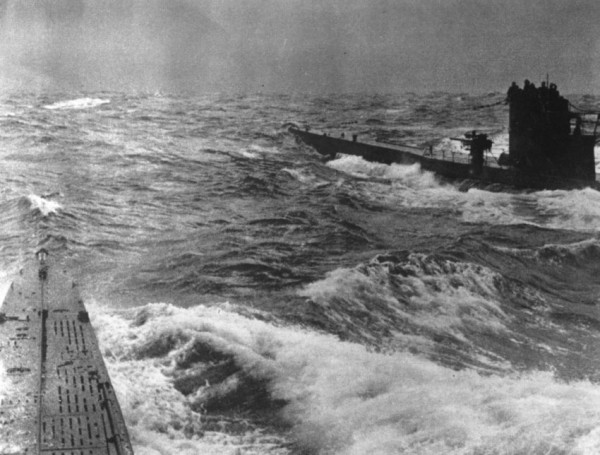
Prior to the pipelines, deadly U-boats wreaked havoc on oil tankers from the Gulf of Mexico by way of the Caribbean to the East Coast.
“Besides, without the outstanding cooperation of the Petroleum Administration for War with the numerous oil companies of America, World War Two very likely would never have been won by the Allies either,” Miller explained in a 2002 lecture at the George Washington University, Washington, D.C.
Thanks to a combined effort of the government and the petroleum industry, two pipelines were constructed to carry oil from Texas to Midwest and East Coast refineries…and win the war.
“The Big Inch and Little Big Inch pipelines, it should be stressed, aided almost beyond estimation the winning of World War Two by the Allies,” Miller added in “How Important Was Oil in World War II?” for the History News Network.
Beginning in August 1942, War Emergency Pipelines, Inc., launched the longest petroleum pipeline construction project ever undertaken in the United States — two pipelines spanning 1,200 miles.
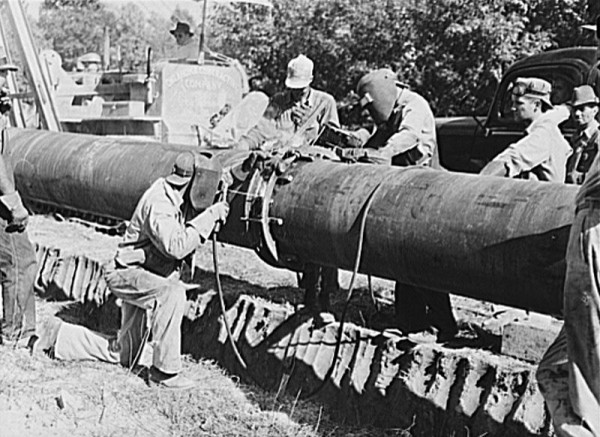
Welding a section of the Big Inch pipe by the “stove pipe” method in 1942. Courtesy the Library of Congress, U.S. Farm Security Administration/Office of War Information Black & White Photographs.
Conceived to supply wartime fuel demands — and in response to deadly U-boat attacks on oil tankers along the eastern seaboard, the Caribbean and in the Gulf of Mexico — the oil pipelines lines were extolled as “the most amazing government-industry cooperation ever achieved.”
With a goal of transporting thousands of barrels of oil per day, the $95 million project called for construction of a 24 inches in diameter pipeline (Big Inch) from East Texas oilfields to Illinois. An accompanying pipeline with a 20-inch diameter — the Little Big Inch — would transport refined products as far as New York and Philadelphia.
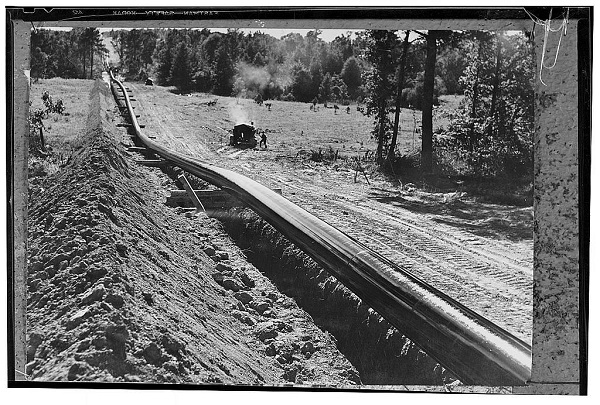
The Big Inch was completed just 350 days after construction began. After World War II the pipeline became war surplus and was sold in 1947 to Texas Eastern Transmission Corporation, which incorporated specifically to bid on it. Photo courtesy Library of Congress,
“A ditch four feet deep, three feet wide and 1,254 miles long was to be dug from Longview (Texas) across the Mississippi River to Southern Illinois and then east to Phoenixville, Pennsylvania, with lines from there to New York City and Philadelphia,” explained the Texas State Historical Association.
Ceremonies marked the final weld on the Big Inch in July 1943, just 350 days after construction began. Soon after the Little Big Inch began transporting refined products in 1944, the official dedication of both pipelines took place in Rockwood, Pennsylvania, on March 24.
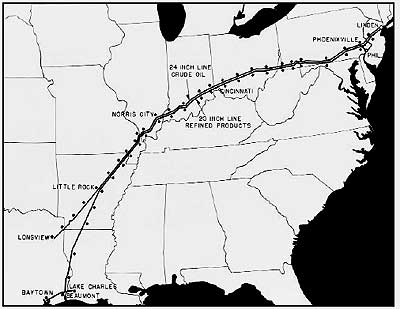
Construction of the Big Inch began in August 1942, and was completed just one year later. Little Big Inch construction began April 23, 1943, with the placing of the last pipe on October 8. Map courtesy Texas Eastern Transmission Corp.
The Little Big Inch line could carry four products: gasoline, heating oil, diesel oil, and kerosene — each separated by solid rubber balls that were slightly smaller than the inside diameter of the 20-inch pipe.
Before the two pipelines began transporting oil, Kriegsmarine U-boats had sunk so many tankers that many Caribbean island beaches were seriously polluted with oil, said historian Miller.
U.S. Petroleum wins WW II
Miller, a speaker with the Organization of American Historians Distinguished Lectureship Series since 1999, reported that Burt E. Hull of the Texas Company, “was what one might call the ‘dean of the pipeliners’ in the U.S. Under his direction the Big Inch was completed in record time.”
The pipelines, both finished before the D-Day invasion at Normandy on June 6, 1944, made possible the delivery of huge quantities of oil and its refined products for Operation Overlord, the landing in northern France, Miller explained in his oil history.
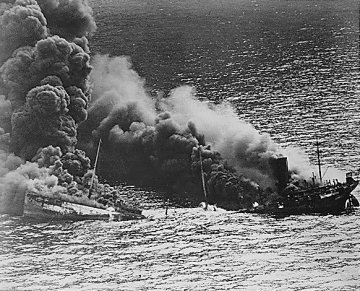
Between January 11 and February 28, 1942, 74 ships were attacked and all but one were sunk or damaged — with no losses to the U-boats. Photo courtesy National Museum of the U.S. Navy.
U.S. oil supplies were indispensable in manufacturing synthetic rubber for tires, lubricants for machinery, and fuel for mechanized forces. Using 100-octane aviation gasoline proved essential for achieving Allied air superiority.
“Now, it cannot be stated too forcefully,” Miller concluded, “American oil, which amounted in all to 6 billion barrels, out of a total of 7 billion barrels consumed by the Allies for the period of World War Two, brought victory! Without the prodigious delivery of oil from the U. S. this global war, quite frankly, could never have been won.”
Post-War Oil and Natural Gas Pipelines
After the war, the famous pipelines became war surplus property. Uncle Sam put them up for sale. “The pipelines became the focus of a clash of interest groups, with the oil and gas industry wanting to convert them to natural gas pipelines and the railroad and coal industries opposing this,” noted the Texas State Historical Association.
The Surplus Property Administration hired an engineering firm, which recommended the pipelines be converted to natural gas transmission. A four-month lease with the Tennessee Gas and Transmission Company proved natural gas transmission feasible and the pipelines were auctioned.
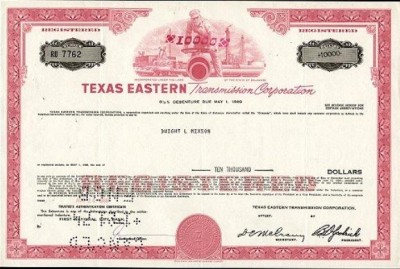
Texas Eastern Transmission, today part of Spectra Energy, bought both pipelines in 1947.
Texas Eastern Transmission Corporation was created specifically to bid on the planned War Assets Administration sale of these World War II surplus pipelines.
The new company submitted its winning bid of $143,127,000 just nine days after incorporating on January 30, 1947. It then managed the Big Inch and Little Big Inch pipelines for more than four decades.
In 1989, Panhandle Eastern Pipe Line Company bought Texas Eastern Transmission for $3.2 billion and became PanEnergy. Eight years later, Duke Power Company purchased PanEnergy and formed Duke Energy.
In January 2007, Spectra Energy separated from Duke Energy to become an independent publicly traded, natural gas company — and owner of the two historic pipelines.
Learn more about oil history and infrastructure by studying the 800-mile Trans-Alaska pipeline of the 1970s.
_______________________
Recommended Reading: Oil and Gas Pipeline Fundamentals (1993); Fightin’ Oil (1943); Oil: From Prospect to Pipeline
(1971); The Prize: The Epic Quest for Oil, Money & Power (1991). Amazon purchases benefit the American Oil & Gas Historical Society. As an Amazon Associate, AOGHS earns a commission from qualifying purchases.
_______________________
The American Oil & Gas Historical Society (AOGHS) preserves U.S. petroleum history. Please become an AOGHS annual supporter and help maintain this energy education website and expand historical research. For more information, contact bawells@aoghs.org. © 2024 Bruce A. Wells.
Citation Information – Article Title: “Big Inch Pipelines of WW II.” Authors: B.A. Wells and K.L. Wells. Website Name: American Oil & Gas Historical Society. URL: https://aoghs.org/petroleum-in-war/oil-pipelines. Last Updated: July 26, 2024. Original Published Date: April 25, 2014.



